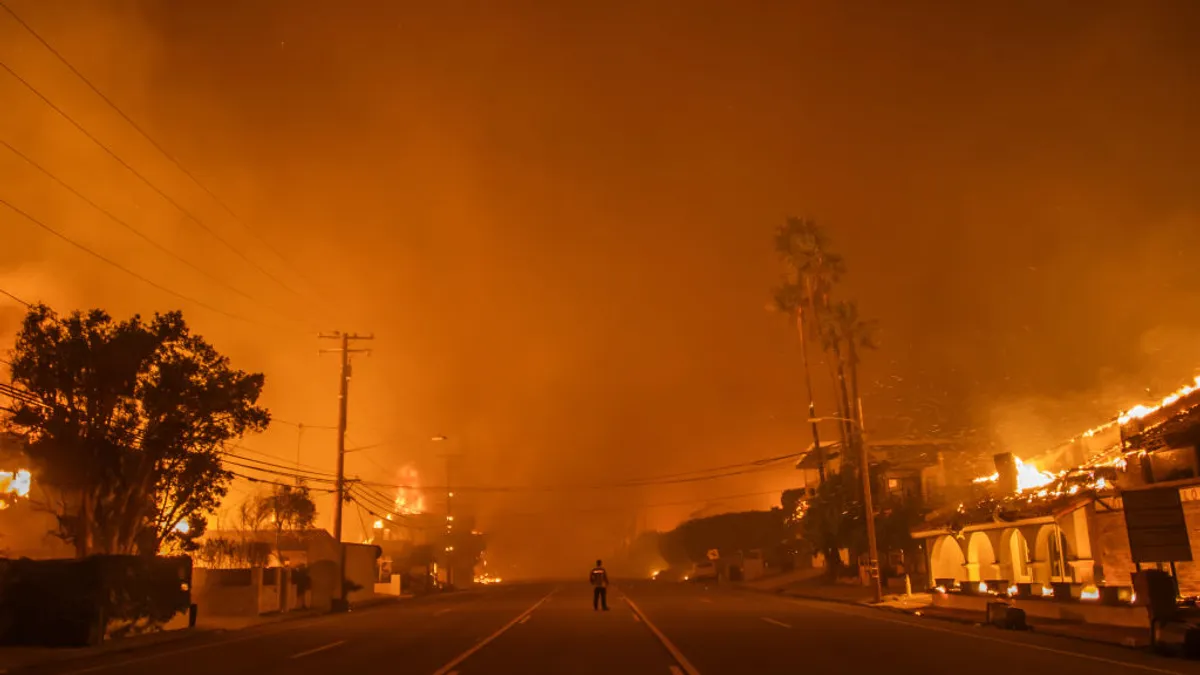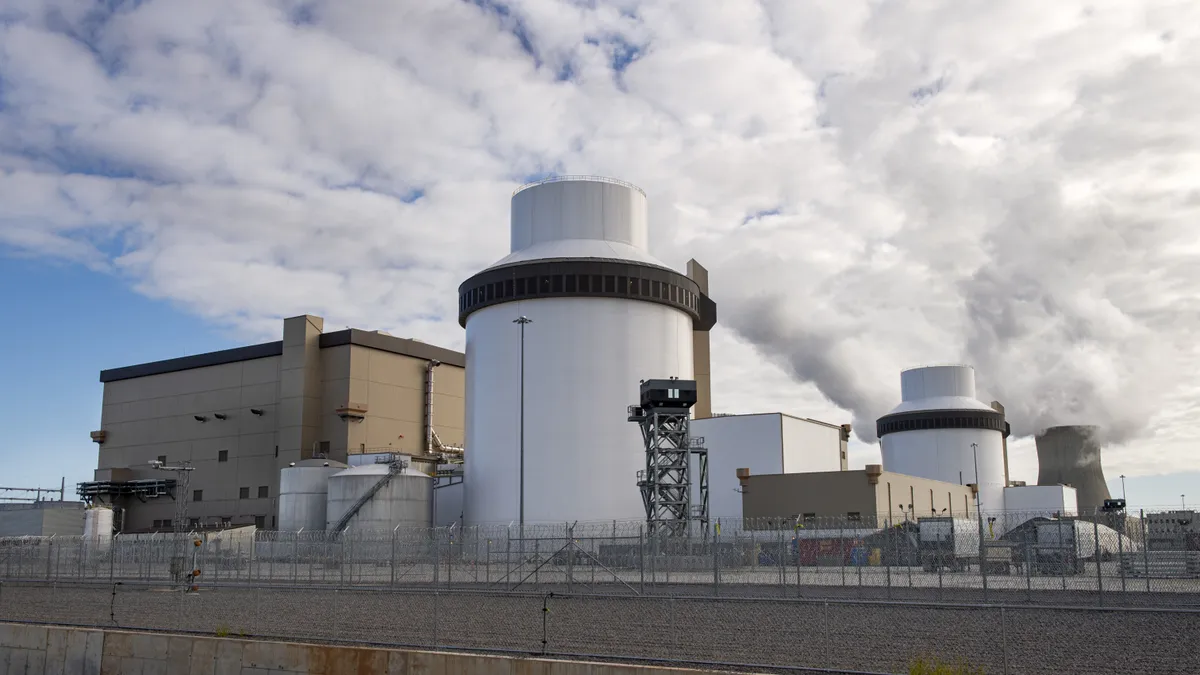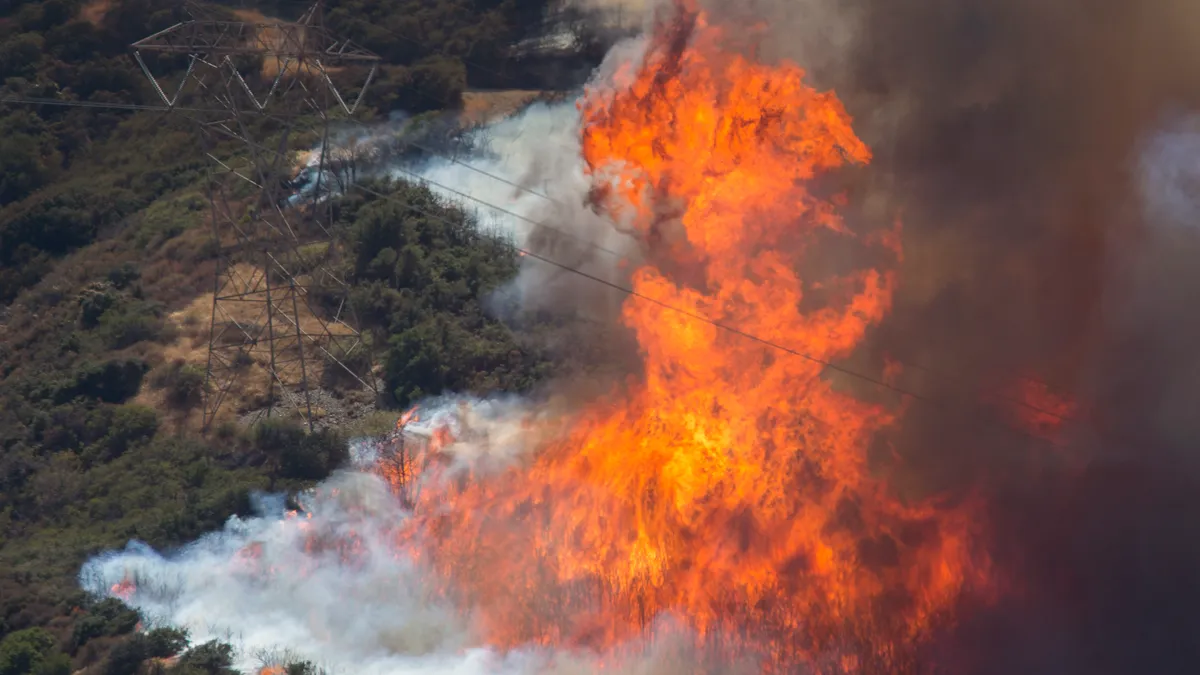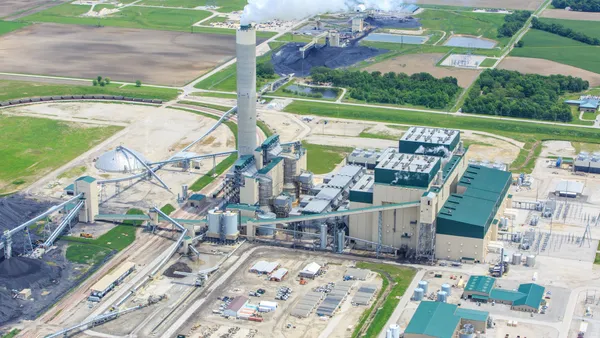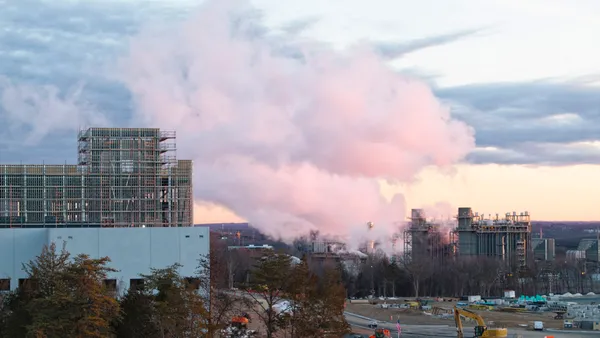Dive Brief:
- Pacific Gas and Electric is in talks with with state officials about a possible expansion of California's public wildfire insurance fund, company leaders said Thursday during a fourth quarter earnings call.
- Although equipment owned by PG&E has not been implicated in the recent spate of wildfires in Southern California, investors have expressed concern that a catastrophic wildfire could deplete the state fund, which reimburses utilities for payouts to the victims of wildfires if the fire is triggered by a participating utility.
- In addition to seeking reassurance from state officials about the fund, PG&E has also made extensive investments in wildfire mitigation, CEO Patti Poppe said. But she also said substantial improvements to the utility's credit rating, which suffered as a result of the company's wildfire-related bankruptcy in 2019, were probably “off the table” for the time being.
Dive Insight:
PG&E was not involved in last month's catastrophic Los Angeles-area wildfires, but the company's financial standing could take a hit nonetheless as investors raise questions about its ability to withstand a similar fire in the future, Poppe said.
Like many utilities in the western United States, PG&E has seen its credit rating downgraded as a result of increased wildfire litigation around the nation. And while the company has worked to improve its financial performance and demonstrate recovery from its 2019 bankruptcy — which was triggered by a series of costly wildfire-related lawsuits — last month's wildfires have likely eliminated the possibility that the company's' credit score will improve substantially this year, Poppe said.
“We still remain confident ... that the rating agencies will recognize our progress in time,” she told investors on Thursday. “We were hoping maybe even for a two-notch upgrade. We think that's absolutely off the table. But we do believe that we will be recognized for our performance.”
The company announced on Thursday that it has submitted a proposal to the California Public Utilities Commission to create a new system for connecting large load customers like data centers to the grid, trading up-front payment for services for speedier interconnection. The company projects that this program could cut customers’ power bills by 1-2% for every gigawatt of data center demand it adds to its system.
Poppe said the utility has contracts for 1.4 GW of new load that it expects to bring online between 2026 and 2030, but analysts remained largely focused on the wildfire threat, asking repeated questions about the durability of the state wildfire insurance program and the implications of an investigation suggesting an idle transmission line owned by Southern California Edison was connected to the 14,000 acre Eaton Fire. One analyst on the Thursday earnings call asked about the possibility of PG&E dedicating capital to hiring or training more California firefighters.
Poppe said that firefighting falls outside the utility's purview and defended the state's wildfire insurance fund as a one-of-a-kind, “industry-leading” solution. In addition to extensive investments in wildfire mitigation, she said the company now considered public safety power shutoffs as a first line of defense, instead of a last resort, when it comes to preventing wildfires. The company has already implemented three public safety power shutoffs in the first two months of 2025, she said.
Even so, she said, the company is working with state officials to review the fund and to evaluate the possibility of expanding the program.
“While the utilities have made significant strides in risk mitigation, it seems clear that timely reforms are needed to extend the AB 1054 framework given evolving views of a worst-case fire,” Poppe said. “We hear loud and clear the market's concern about risk exposure beyond the $21 billion wildfire fund as well as the implications for the utility liability cap, under the current statute. You can be assured that building and improving upon the core AB 1054 protections already in place is a critical priority for our team.”
PG&E Corp.’s net income available for shareholders increased in 2024 to $2.5 billion, or $1.17/share, up from $2.2 billion, or $1.05/share, the year before, mainly driven by increased capital spending, according to the San Francisco-based company. Revenue was flat last year at $24.4 billion.


